.
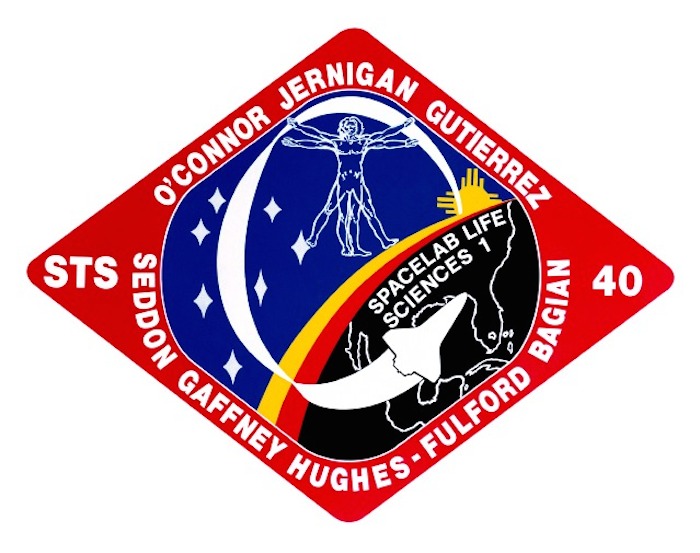
STS-40
Space Shuttle: Columbia
Launch Pad: 39B
Launch Weight: 251,970 pounds
Launched: June 5, 1991, 9:24:51 a.m. EDT
Landing Site: Edwards Air Force Base, Calif.
Landing: June 14, 1991, 8:39:11 a.m. PDT
Landing Weight: 226,535 pounds
Runway: 22
Rollout Distance: 9,438 feet
Rollout Time: 55 seconds
Revolution: 146
Mission Duration: 9 days, 2 hours, 14 minutes, 20 seconds
Returned to KSC: June 21, 1991
Orbit Altitude: 157 nautical miles
Orbit Inclination: 39 degrees
Miles Traveled: 3.8 million
Crew Members

Image above: STS-40 Crew photo with Commander Bryan D. O'Connor, Pilot Sidney M. Gutierrez, Mission Specialists James P. Bagian, Tamara E. Jernigan, M. Rhea Seddon, F. Drew Gaffney and Millie Hughes-Fulford. Image Credit: NASA
Launch Highlights
 The launch was originally set for May 22, 1991. The mission was postponed less than 48 hours before launch when it became known that a leaking liquid hydrogen transducer in the orbiter main propulsion system, which was removed and replaced during leak testing in 1990, had failed an analysis by the vendor. Engineers feared that one or more of the nine liquid hydrogen and liquid oxygen transducers protruding into fuel and oxidizer lines could break off and be ingested by the engine turbopumps, causing engine failure.
The launch was originally set for May 22, 1991. The mission was postponed less than 48 hours before launch when it became known that a leaking liquid hydrogen transducer in the orbiter main propulsion system, which was removed and replaced during leak testing in 1990, had failed an analysis by the vendor. Engineers feared that one or more of the nine liquid hydrogen and liquid oxygen transducers protruding into fuel and oxidizer lines could break off and be ingested by the engine turbopumps, causing engine failure.In addition, one of the orbiter five general purpose computers failed completely, along with one of the multiplexer demultiplexers that control orbiter hydraulics ordinance and orbiter maneuvering system/reaction control system functions in the aft compartment.
A new general purpose computer and multiplexer demultiplexer were installed and tested. One liquid hydrogen and two liquid oxygen transducers were replaced upstream in the propellant flow system near the 17-inch disconnect area, which is protected by internal screen. Three liquid oxygen transducers replaced at engine manifold area, while three liquid hydrogen transducers here were removed and openings plugged. Launch reset for 8 a.m. EDT, June 1, but postponed again after several attempts to calibrate inertial measurement unit 2 failed. Unit was replaced and retested, and launch was rescheduled for June 5.
Mission Highlights
The fifth dedicated Spacelab mission, Spacelab Life Sciences-1, and first mission dedicated solely to life sciences, using the habitable module. The mission featured the most detailed and interrelated physiological measurements in space since 1973-1974 Skylab missions. Subjects were humans, 30 rodents and thousands of tiny jellyfish. Primarily the SLS-1 experiments studied six body systems; of 18 investigations, ten involved humans, seven involved rodents, and one used jellyfish.
The six body systems investigated were cardiovascular/cardiopulmonary (heart, lungs and blood vessels); renal/endocrine (kidneys and hormone-secreting organs and glands); blood (blood plasma); immune system (white blood cells); musculoskeletal (muscles and bones); and neurovestibular (brains and nerves, eyes and inner ear). Other payloads included twelve Get Away Special (GAS) canisters installed on the GAS bridge in the cargo bay for experiments in materials science, plant biology and cosmic radiation; Middeck Zero-Gravity Dynamics Experiment (MODE); and seven Orbiter Experiments (OEX).
---
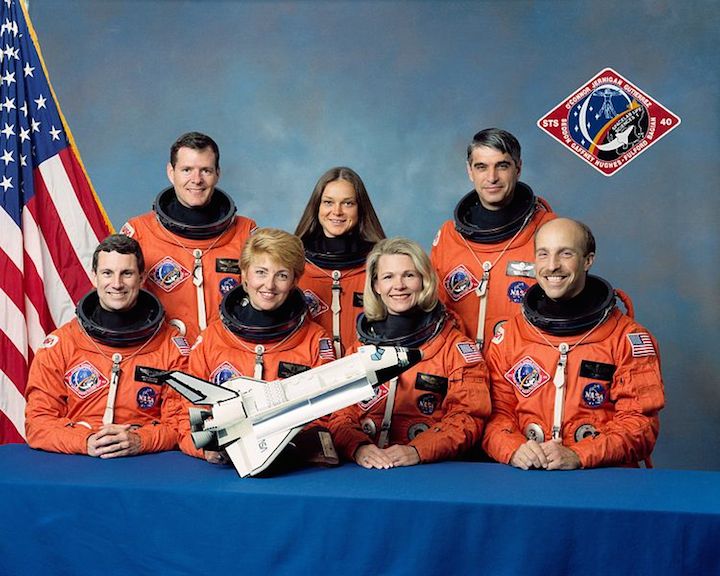
The STS-40 crew portrait includes 7 astronauts. Pictured on the front row from left to right are F. Drew Gaffney, payload specialist 1; Milli-Hughes Fulford, payload specialist 2; M. Rhea Seddon, mission specialist 3; and James P. Bagian, mission specialist 1. Standing in the rear, left to right, are Bryan D. O'Connor, commander; Tamara E. Jernigan, mission specialist 2; and Sidney M. Gutierrez, pilot. Launched aboard the Space Shuttle Columbia on June 5, 1991 at 9:24; am (EDT), the STS-40 mission was the fifth dedicated Spacelab Mission, Spacelab Life Sciences-1 (SLS-1), and the first mission dedicated solely to life sciences.
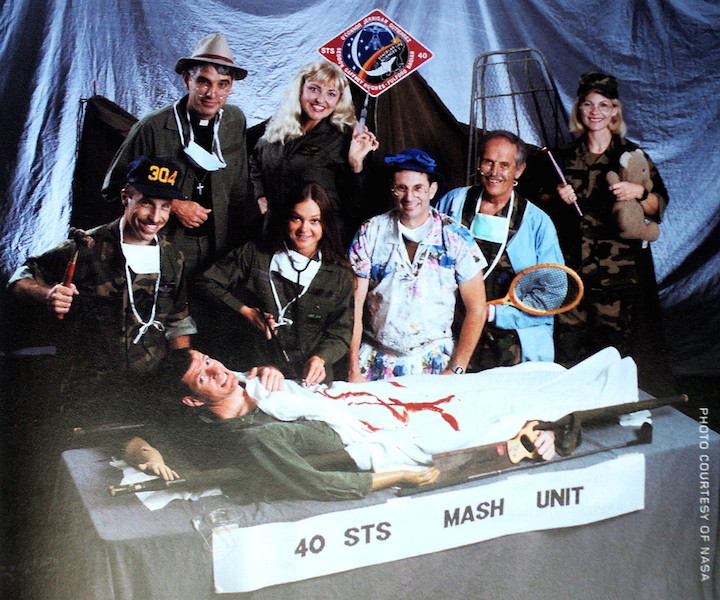
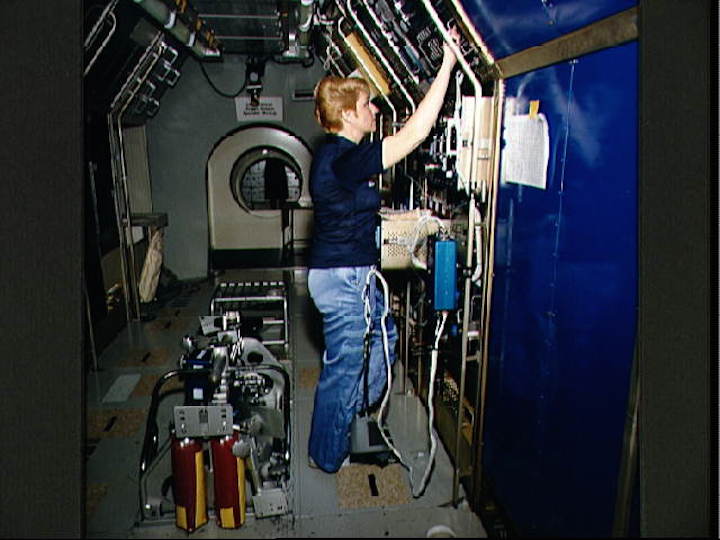
STS-40 Payload Specialist Millie Hughes-Fulford trains in JSC's SLS mockup
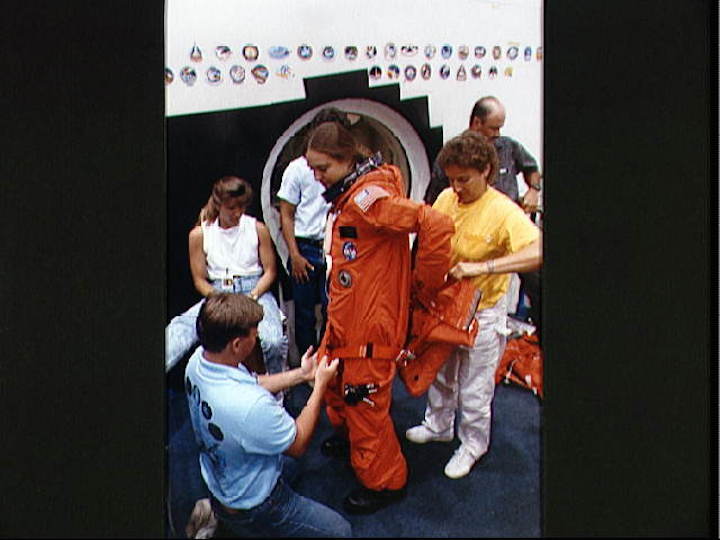
STS-40 MS Jernigan dons LES parachute pack prior to egress training at JSC
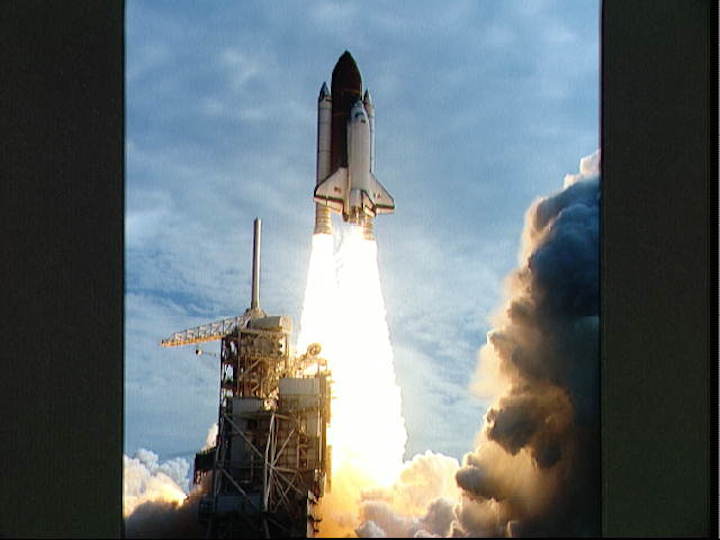
STS-40 Columbia, OV-102, lifts off from KSC with SLS-1 payload
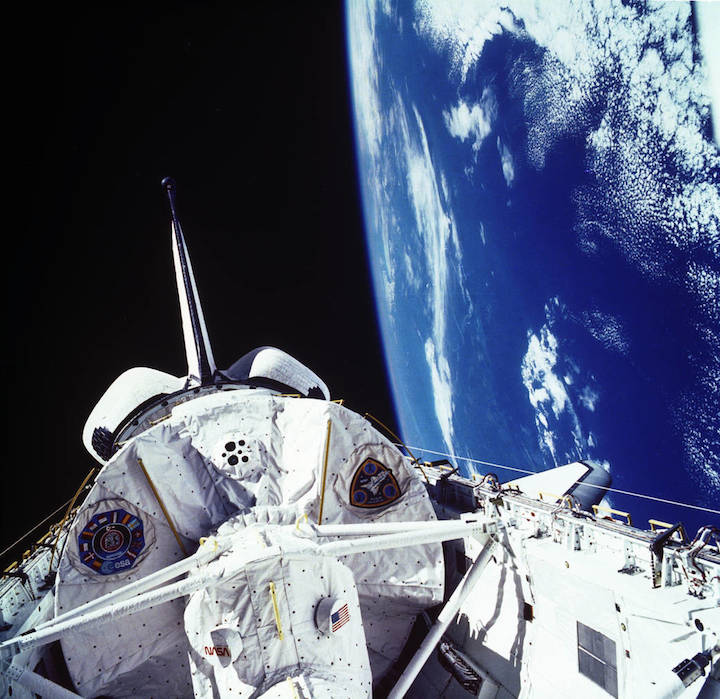
Space Life Science-1 (SLS-1), launched aboard Space Shuttle Orbiter Columbia (STS-40) on June 5, 1991, was the first Spacelab mission dedicated solely to life sciences research. The laboratory for the research took place in a module, shown here, carried in the cargo bay of the Columbia. The purpose of the mission was to study the mechanisms, magnitudes, and time courses of certain physiological changes that occur during space flight, to investigate the consequences of the body's adaptation to microgravity and readjustment to Earth's gravity, and to bring the benefits back home to Earth. The mission was designed to explore the responses of the heart, lungs, blood vessels, kidneys, and hormone-secreting glands, to examine the causes of space motion sickness, and study changes in the muscles, bones and cells. Many studies started during SLS-1 provided data that served as the foundation for investigations on the International Space Station.
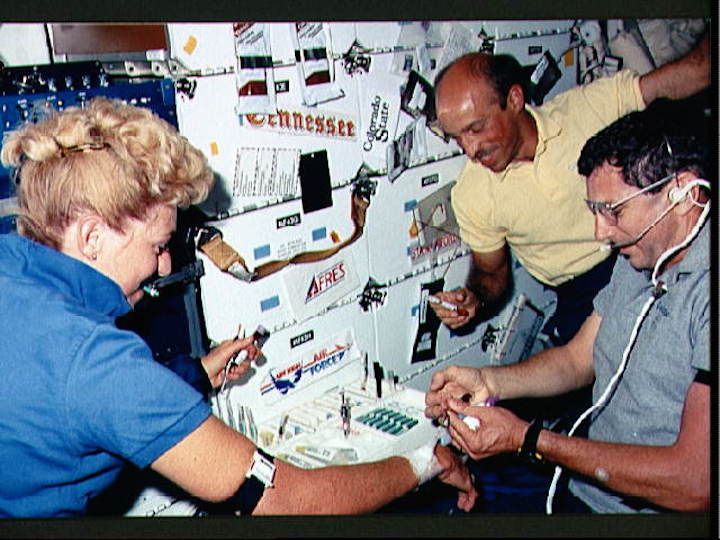
STS-40 crewmembers use inflight blood collection system (IBCS) kit on middeck
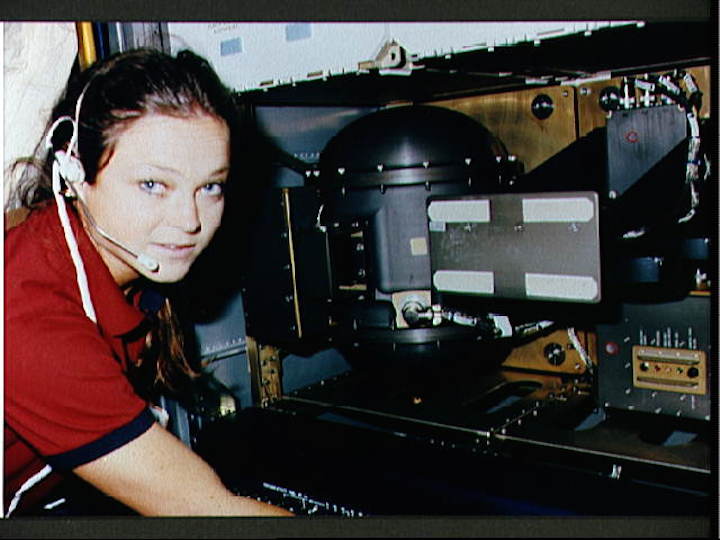
STS-40 Mission Specialist (MS) Jernigan monitors SLS-1 Rack 7 SSCE
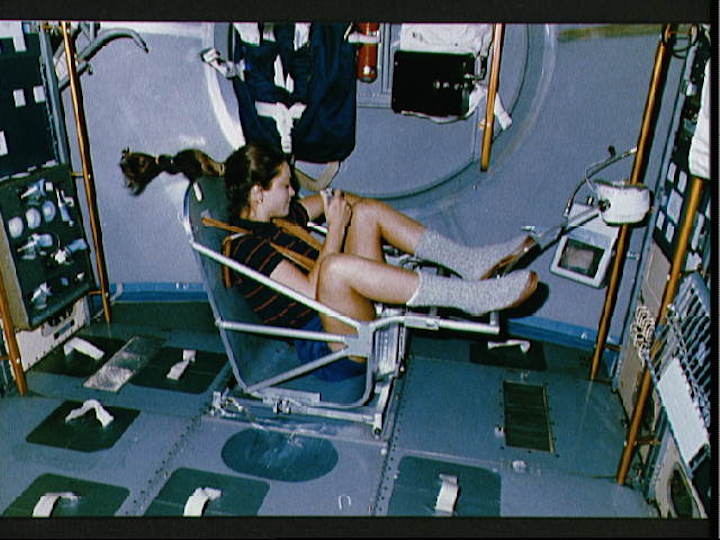
STS-40 Mission Specialist (MS) Jernigan uses BMMD in SLS-1 module
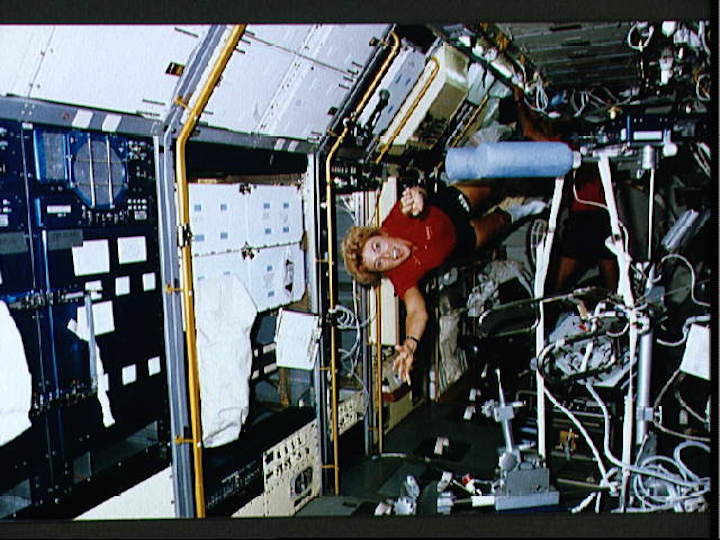
STS-40 Payload Specialist Hughes-Fulford "flies" through SLS-1 module
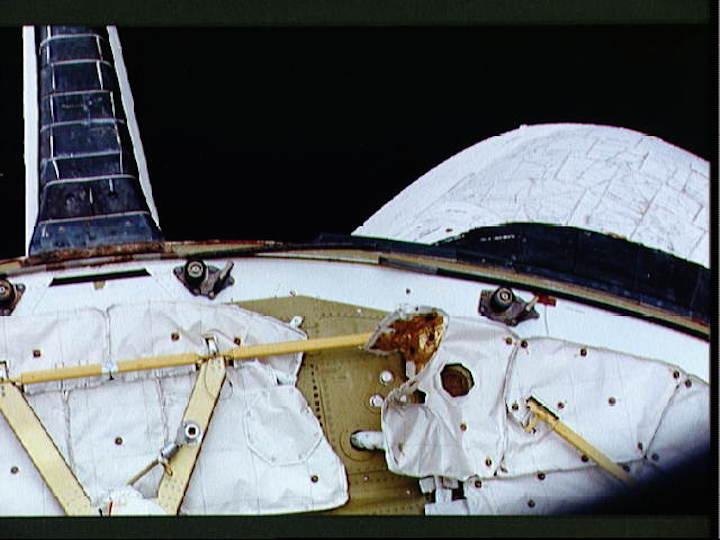
STS-40 Columbia, OV-102, payload bay aft firewall and thermal insulation
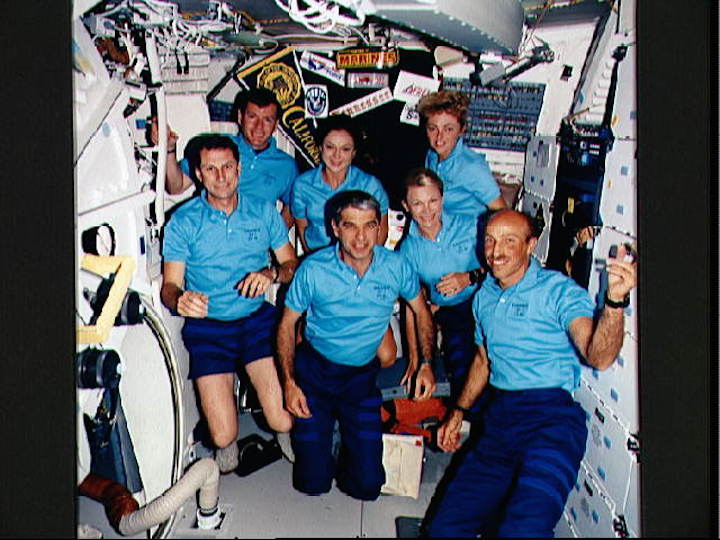
STS-40 crewmembers pose for onboard (in space) portrait on OV-102's middeck
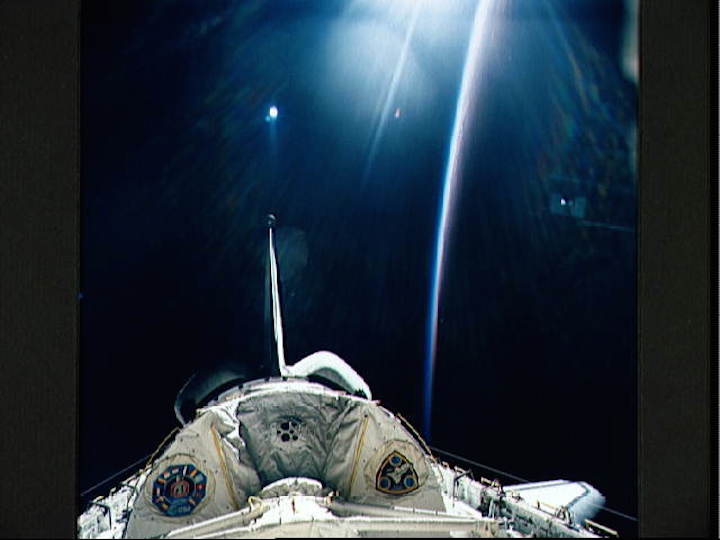
STS-40 Spacelab Life Science 1 (SLS-1) module in OV-102's payload bay (PLB)
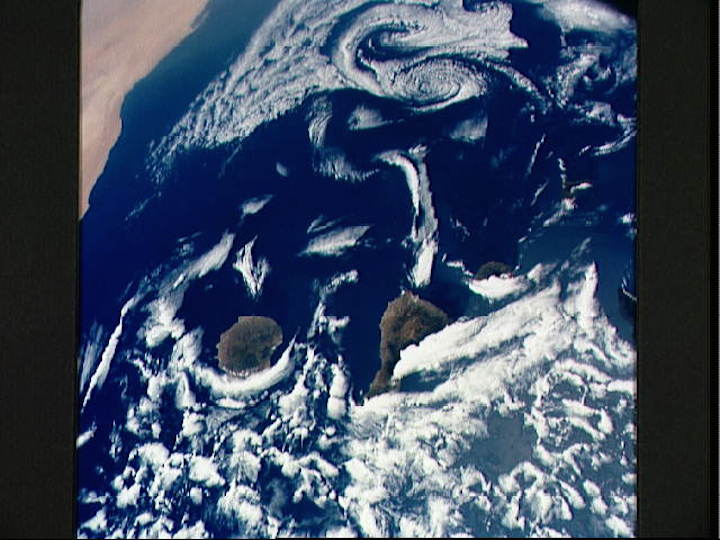
Canary Island Group and von Karman Cloud Vortices.
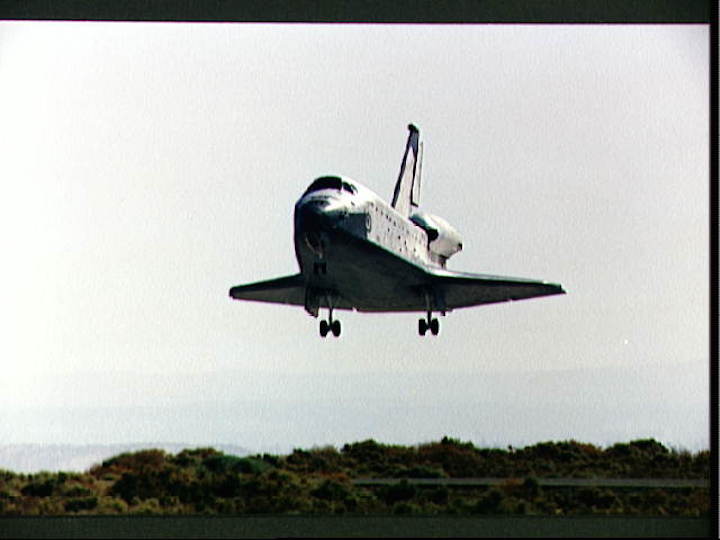
STS-40 Columbia, OV-102, glides towards a landing on runway 22 at EAFB, Calif
---
Frams von STS-40 Columbia Mission NASA-Video:
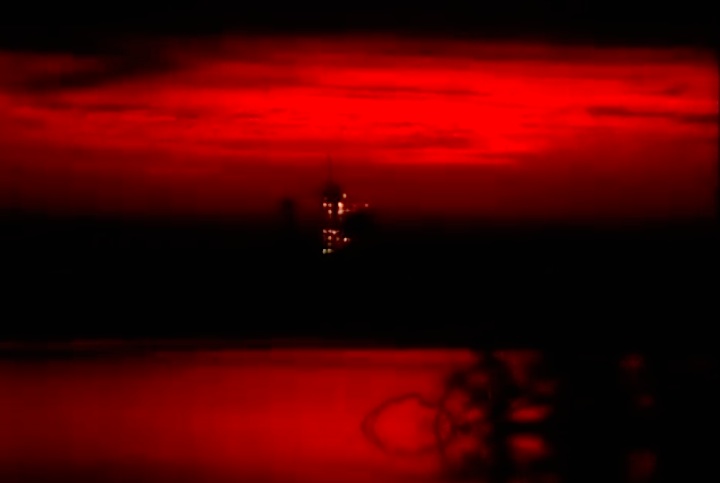
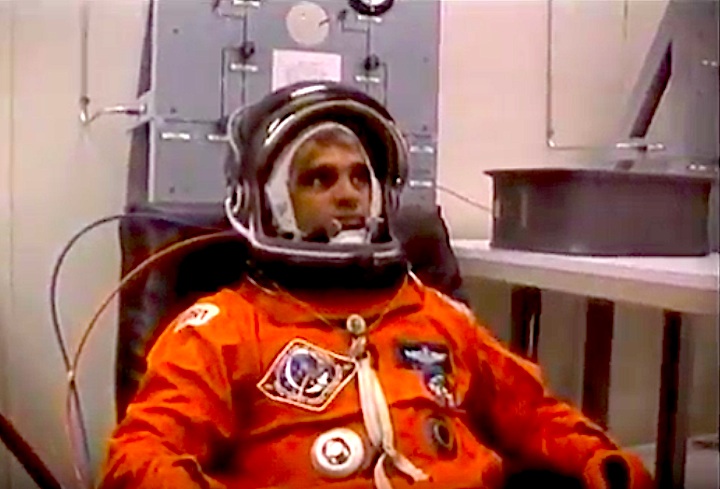
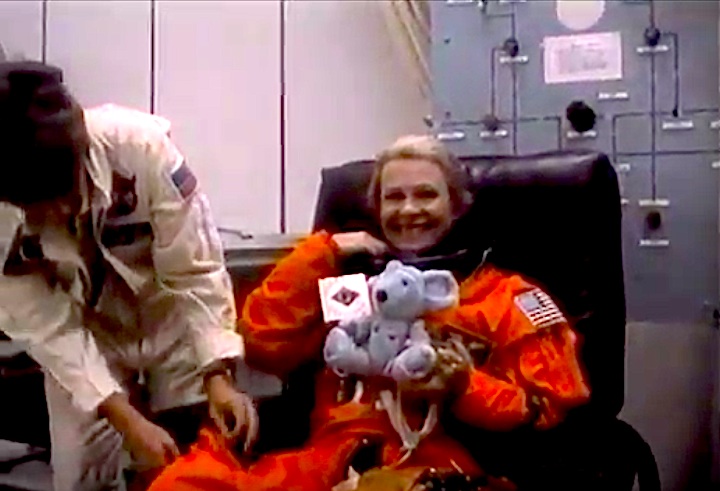
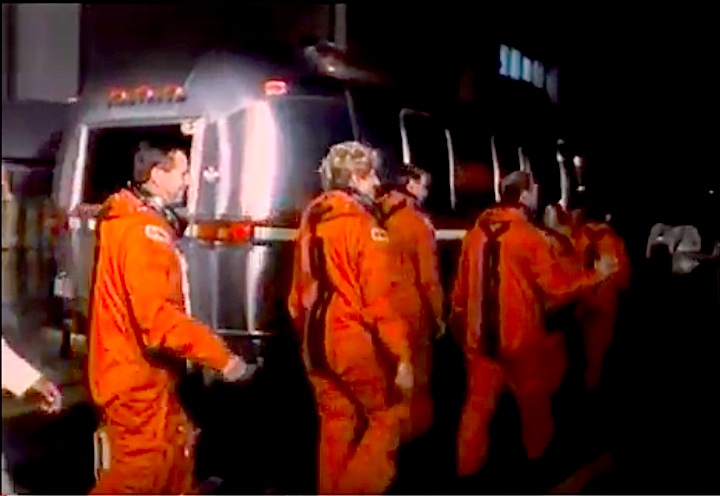
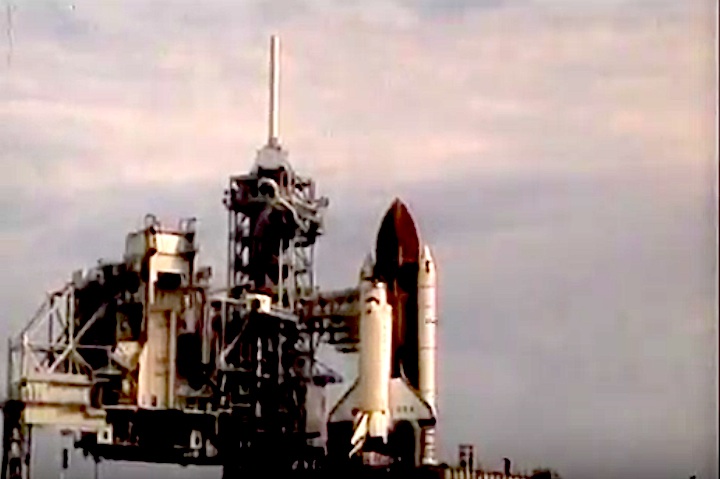
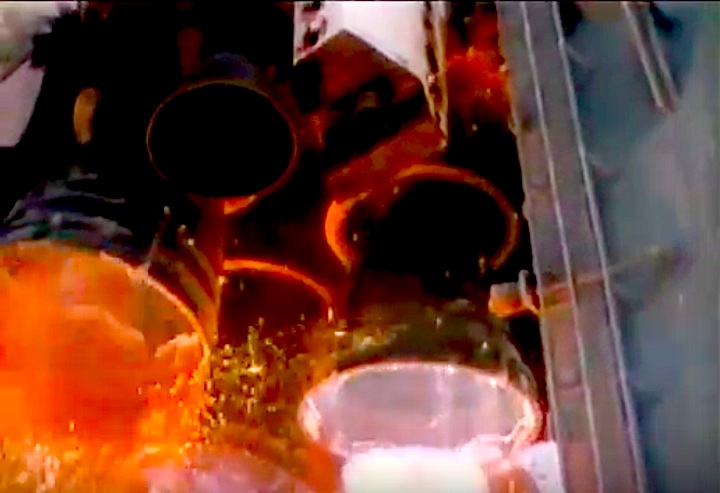
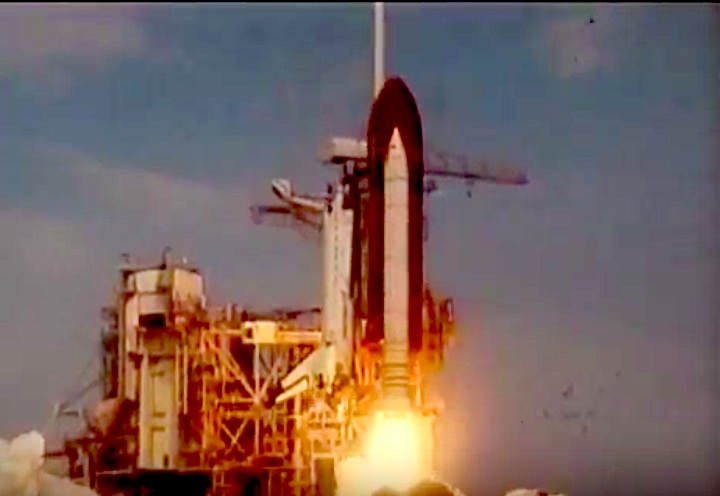
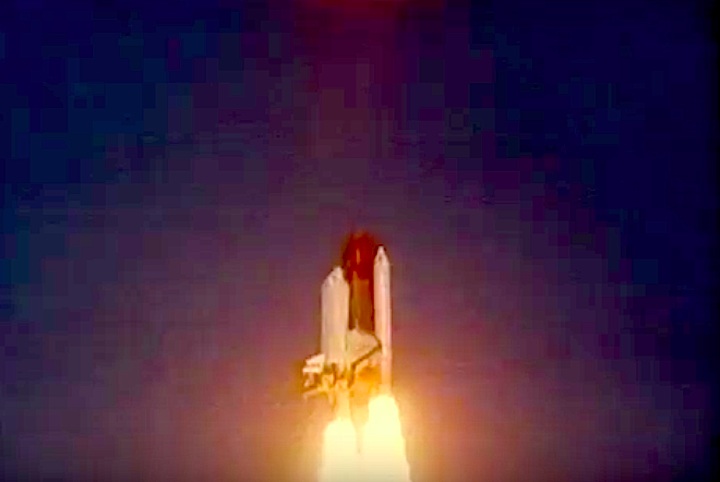
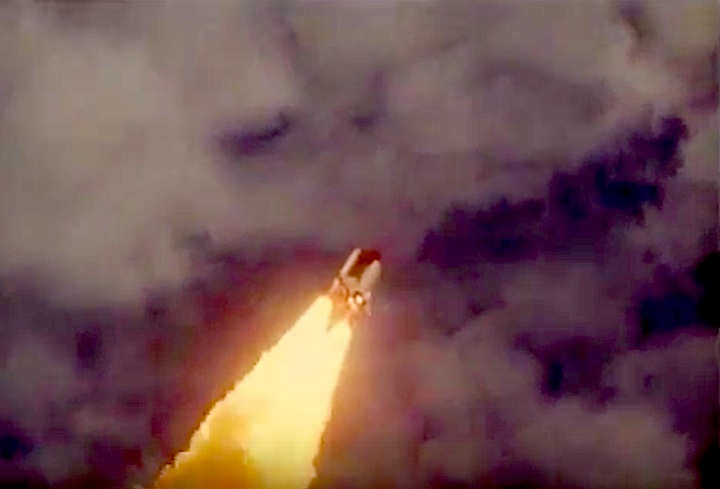
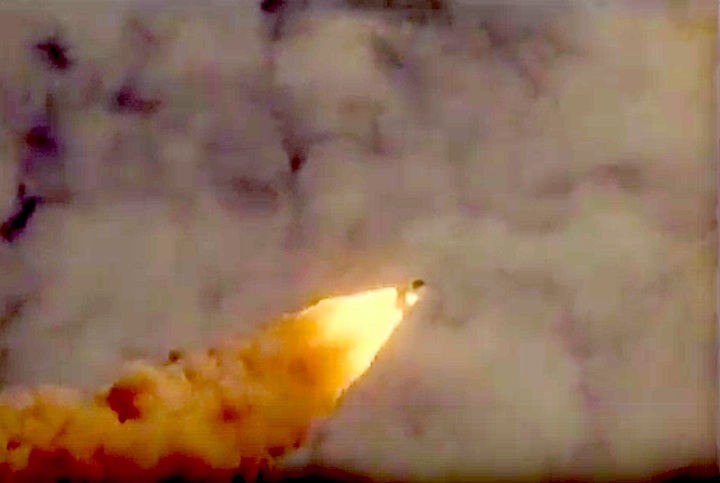
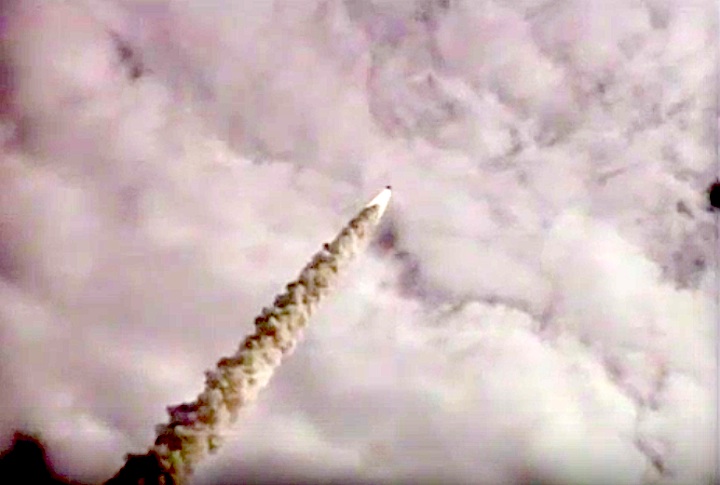
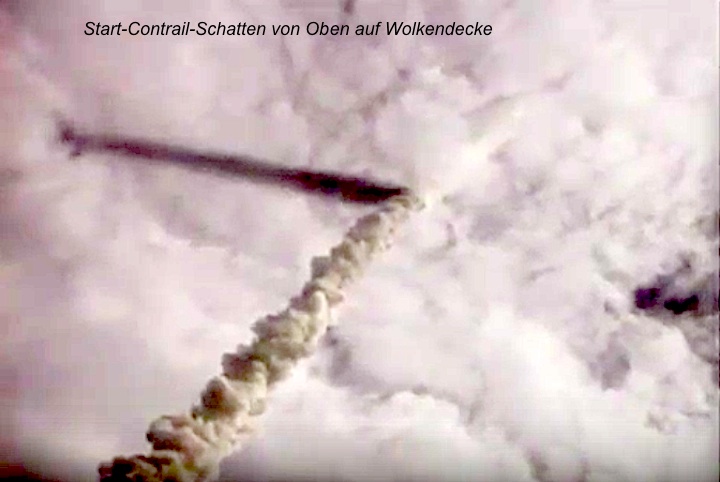
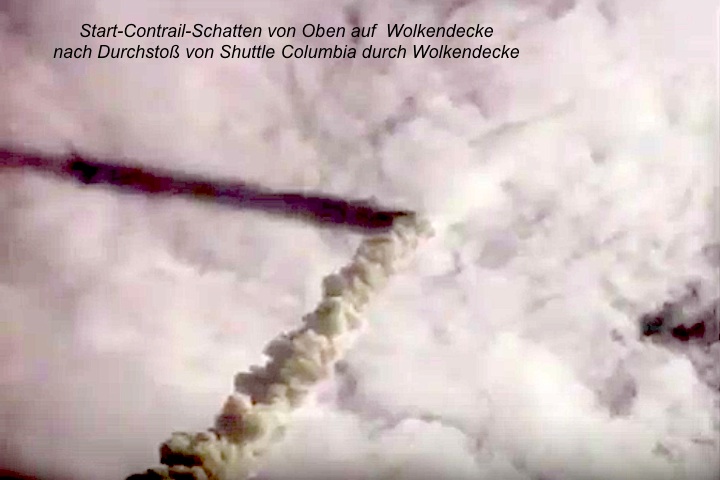
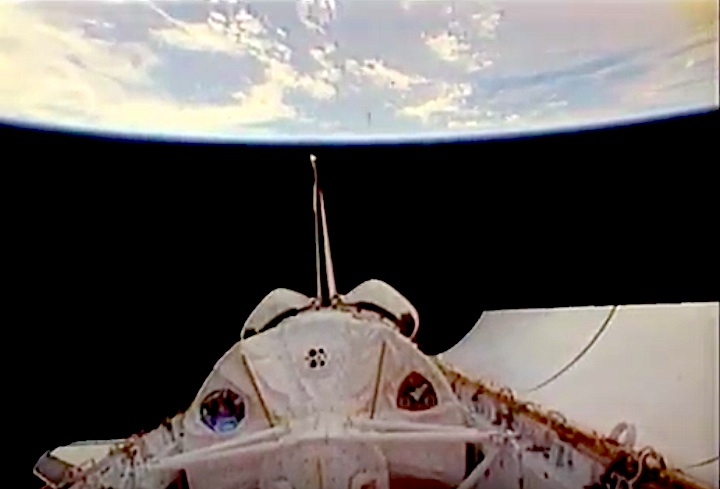
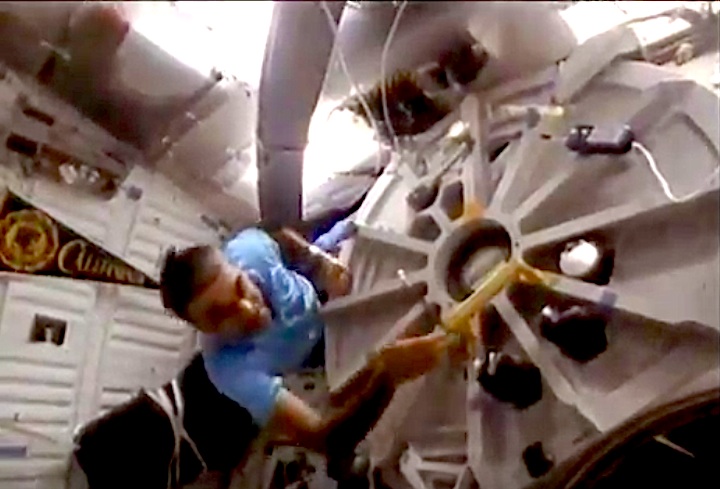
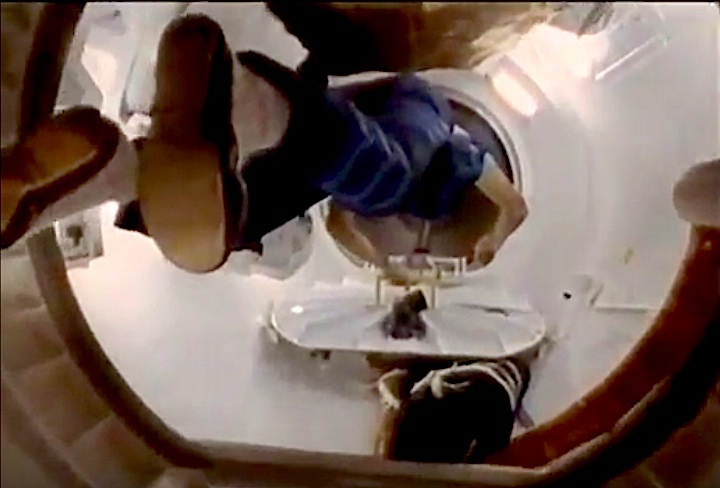
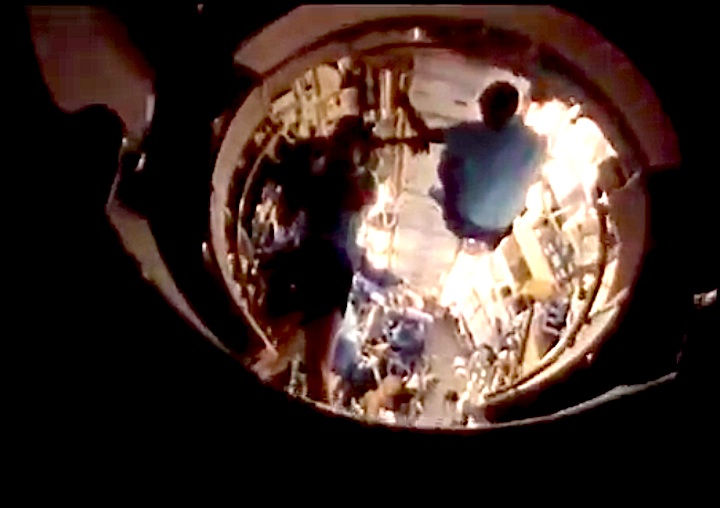
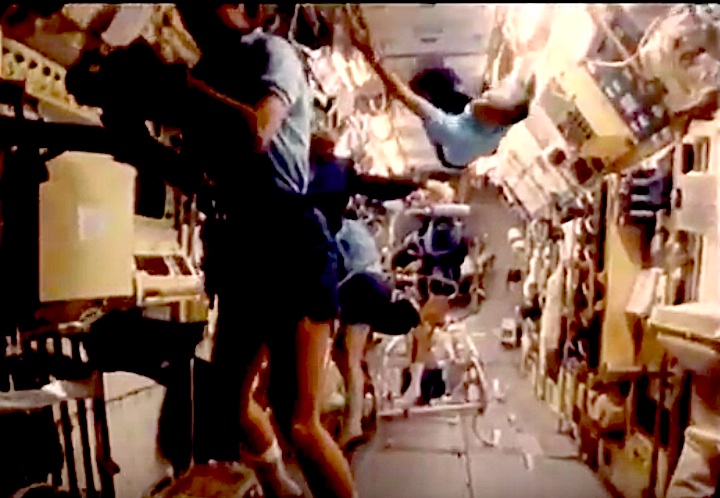
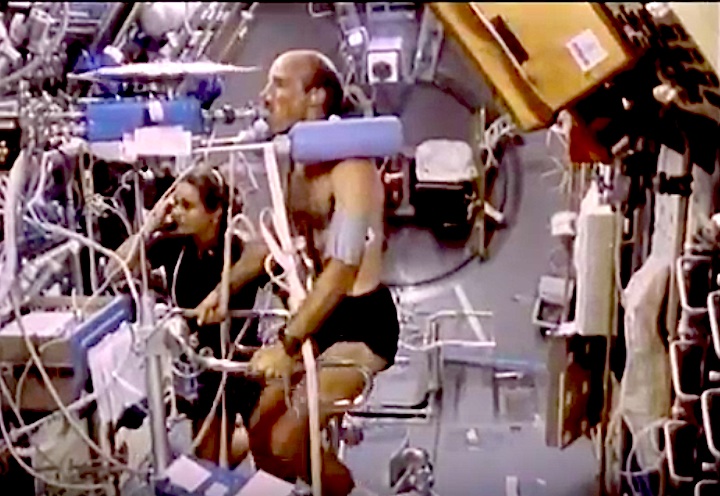
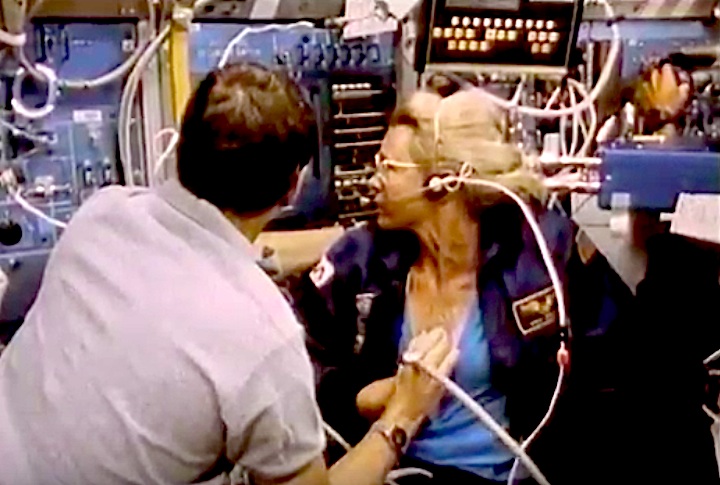
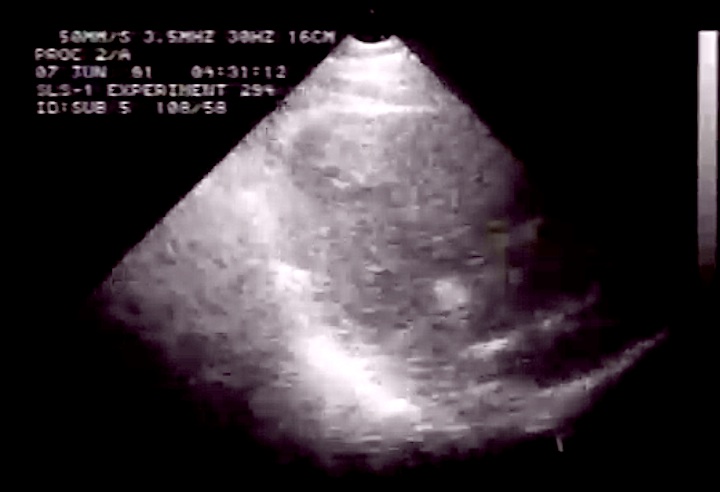
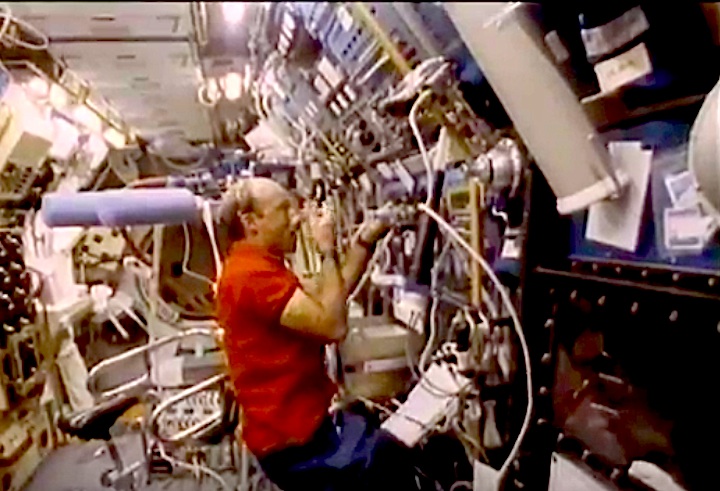
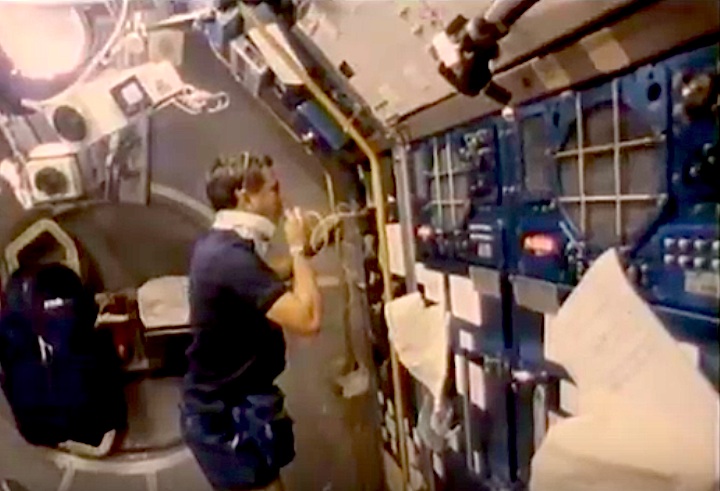
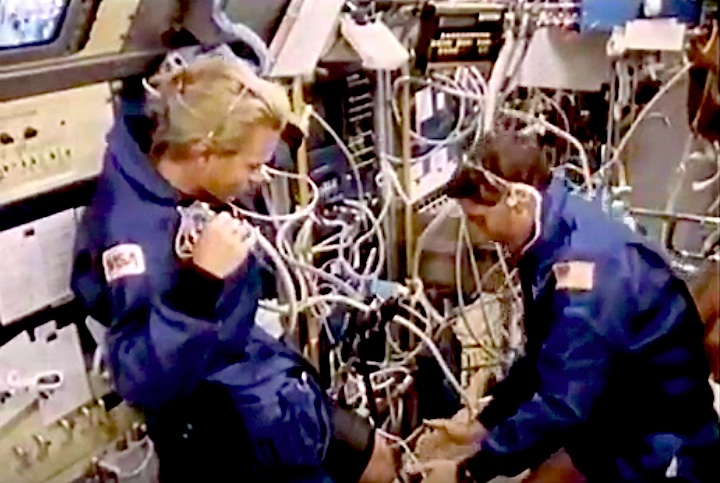
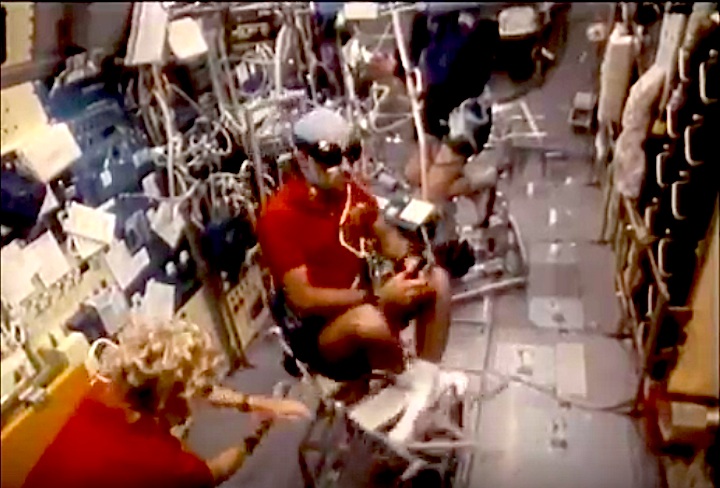
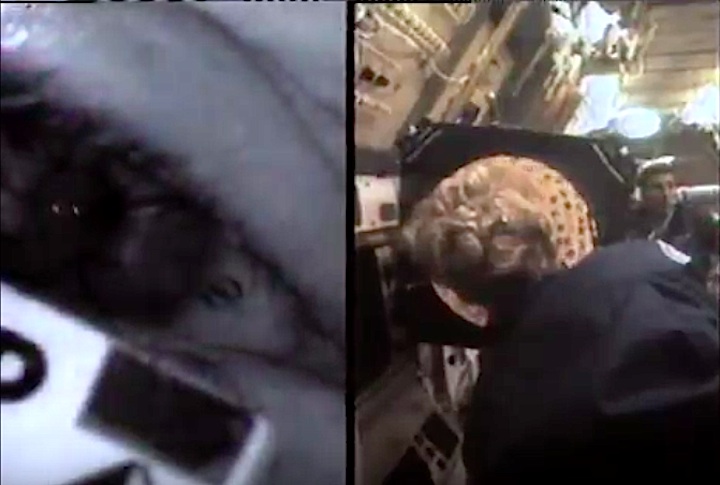
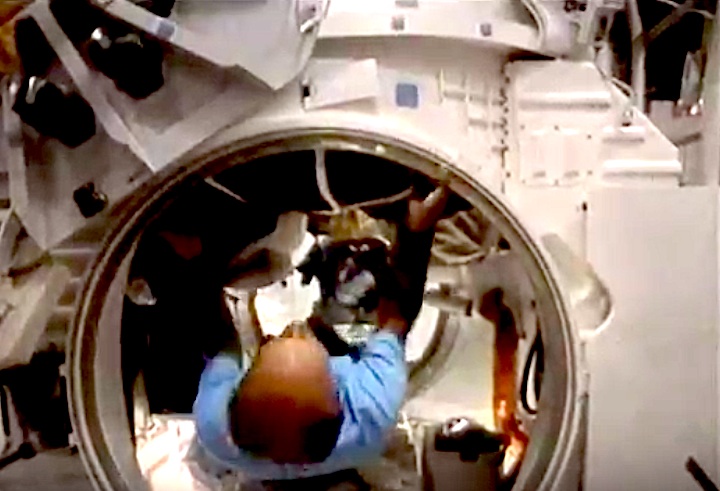
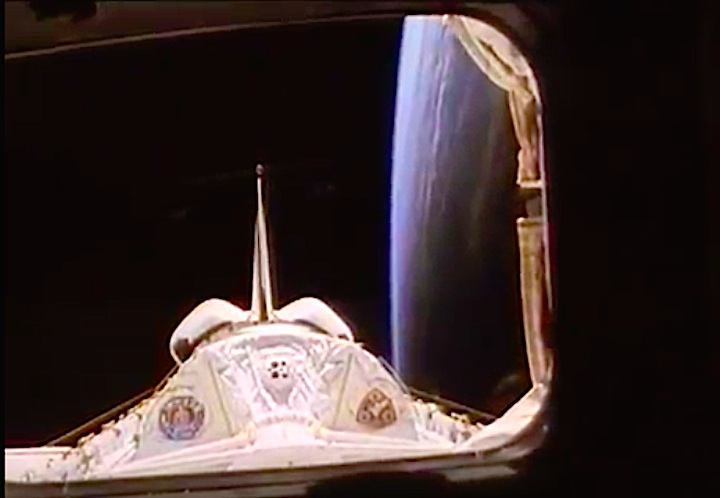

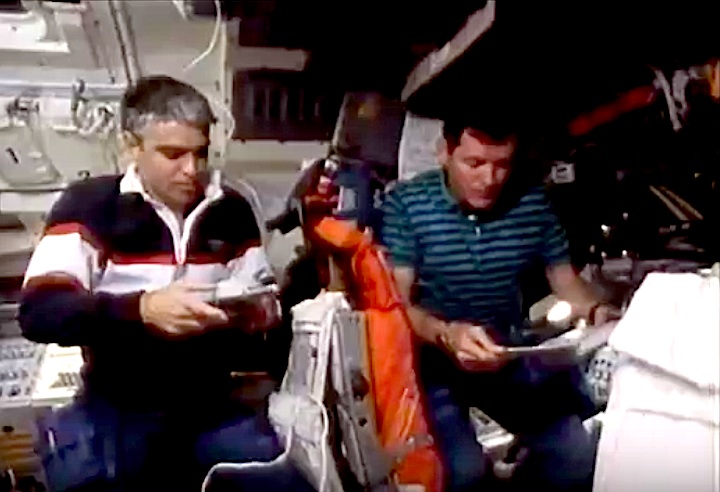
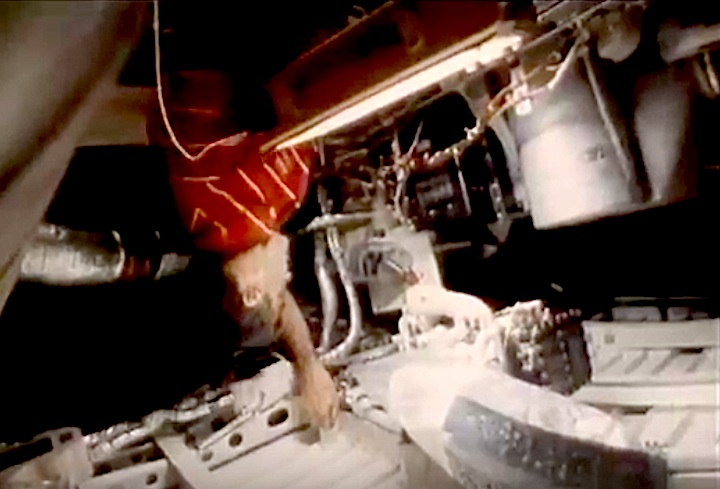
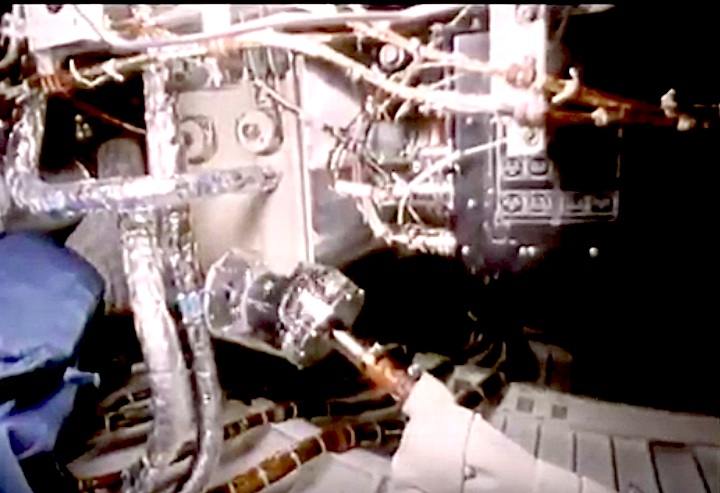
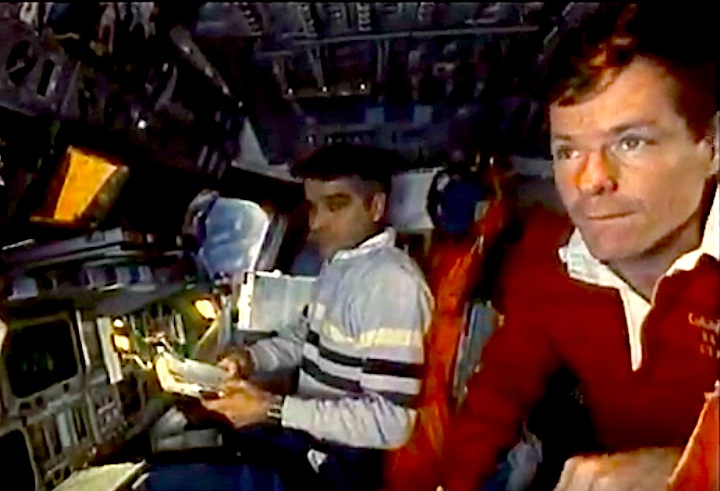
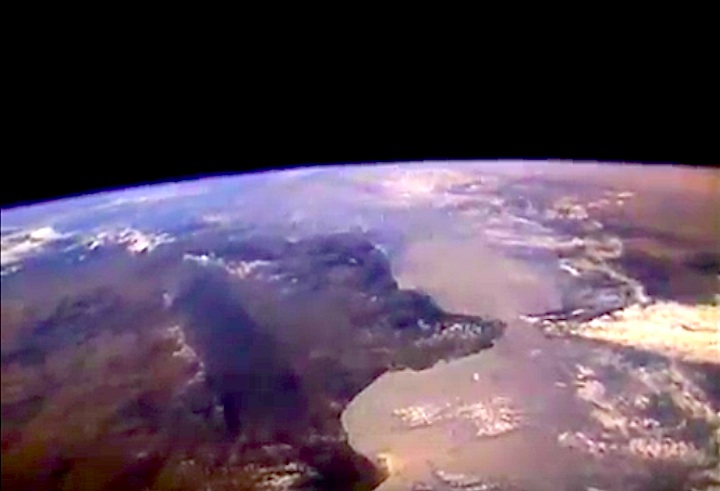
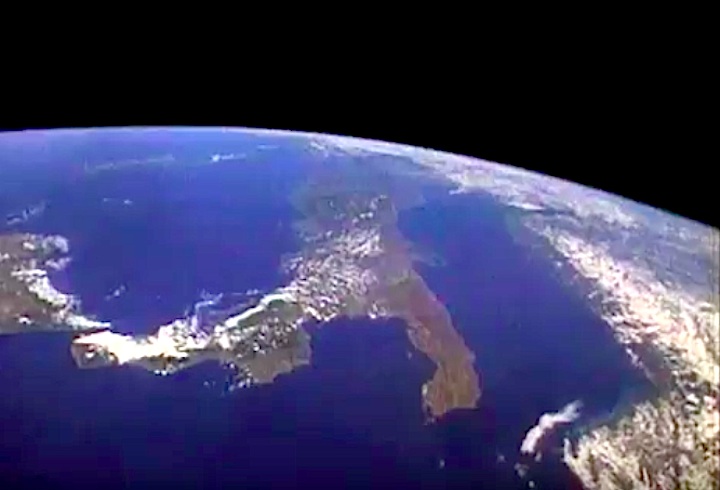
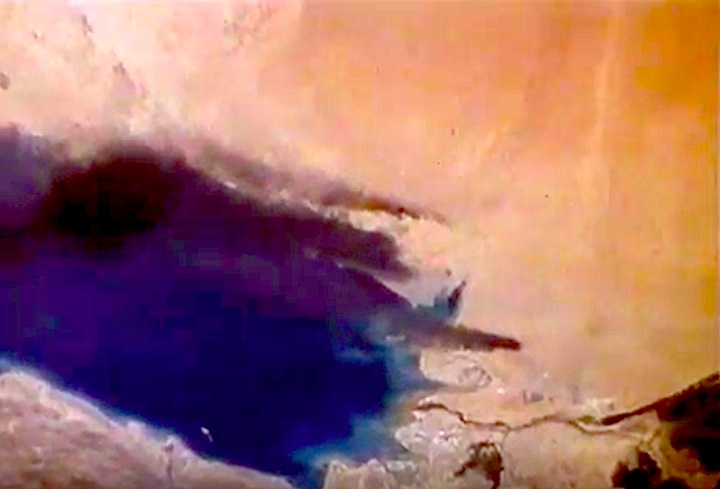
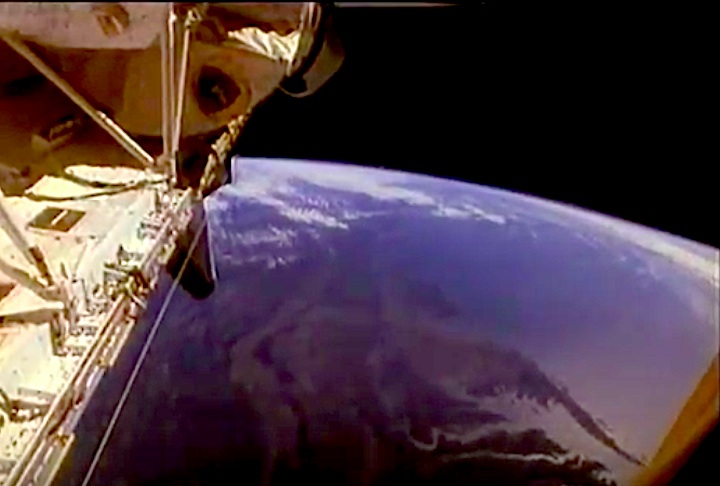
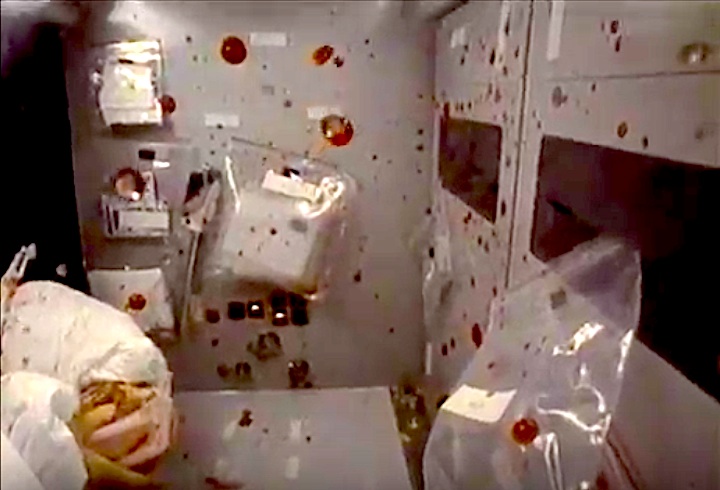
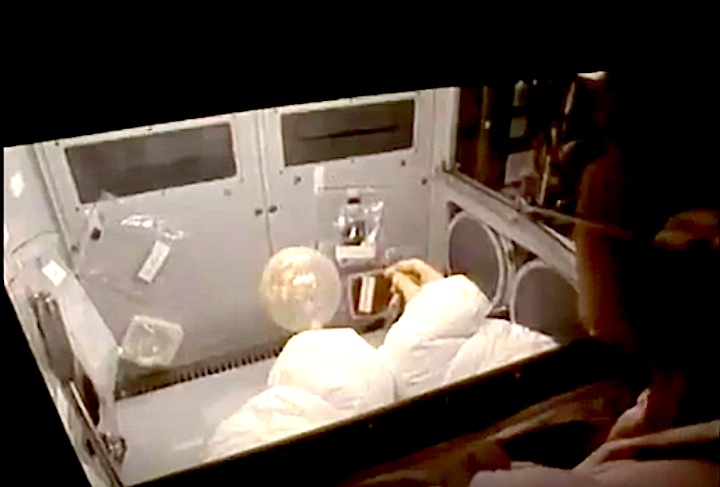
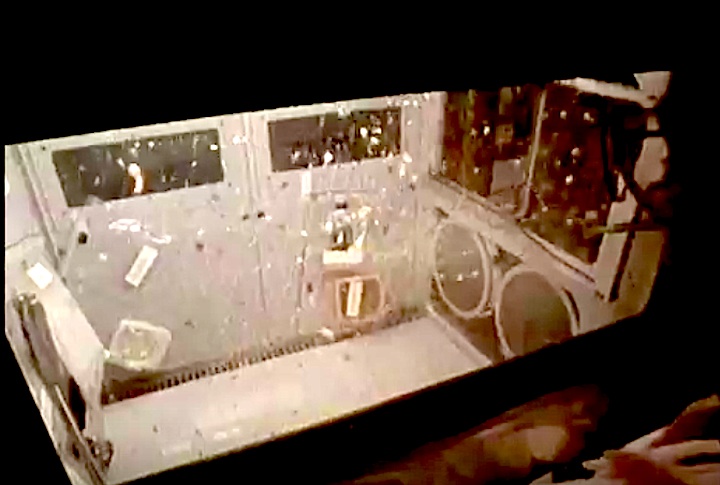
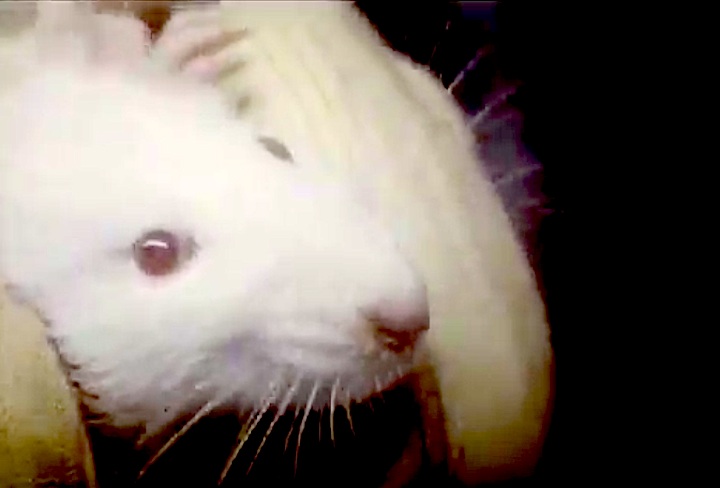
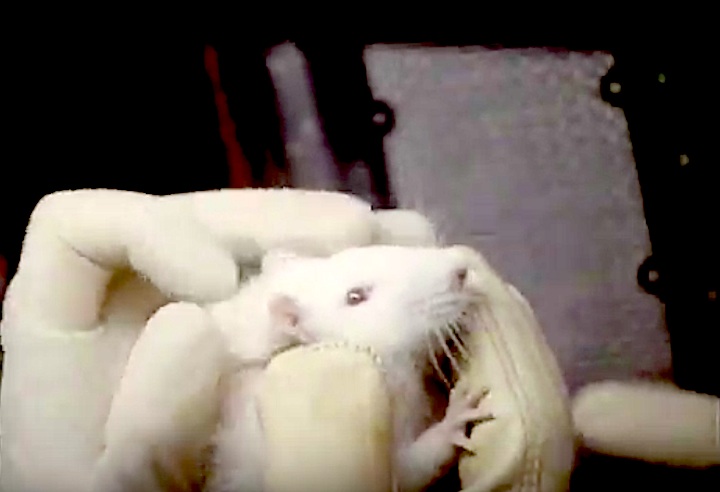
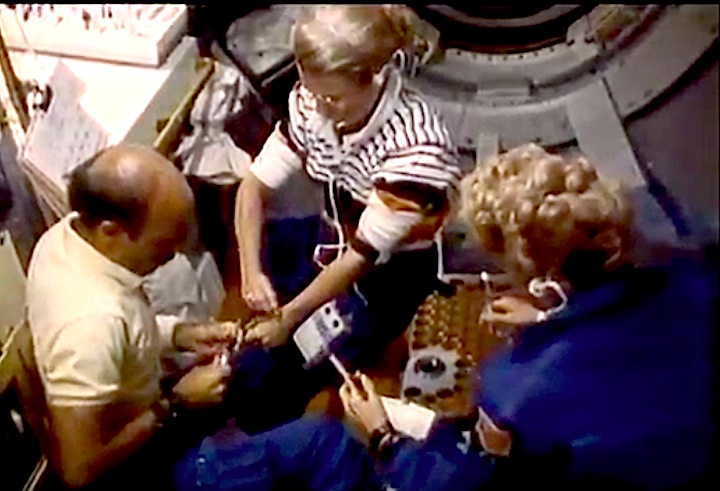
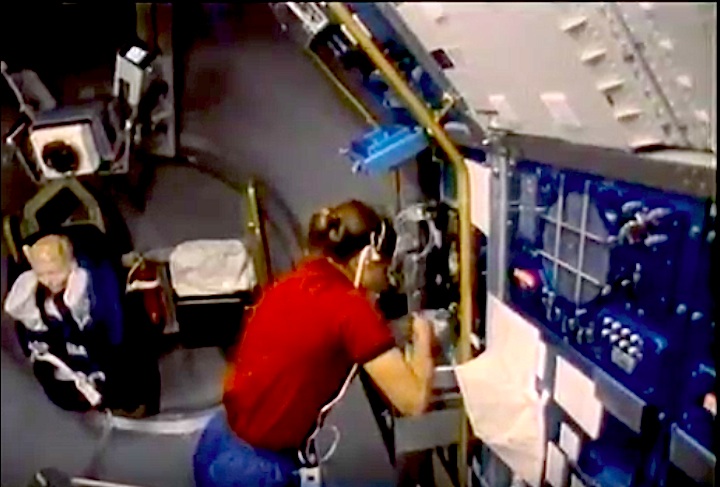
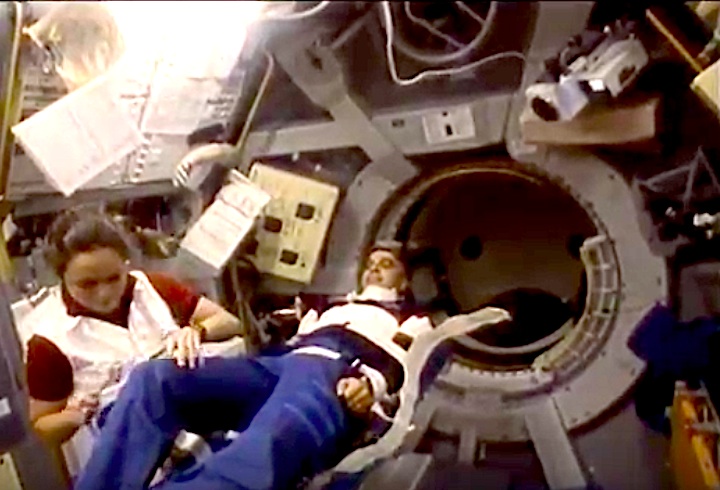
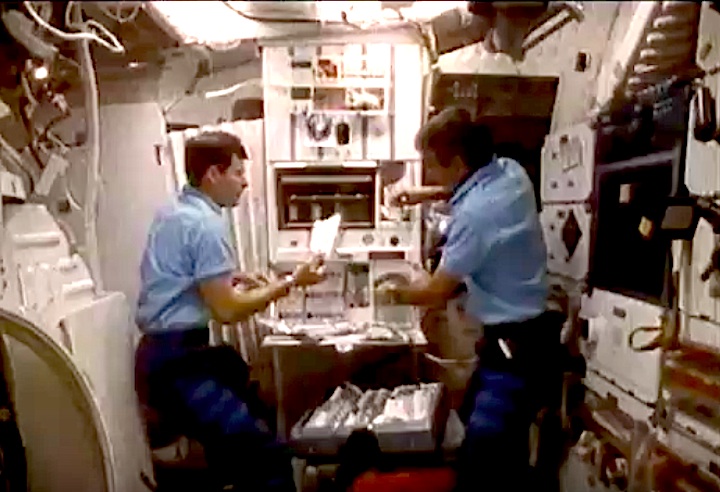

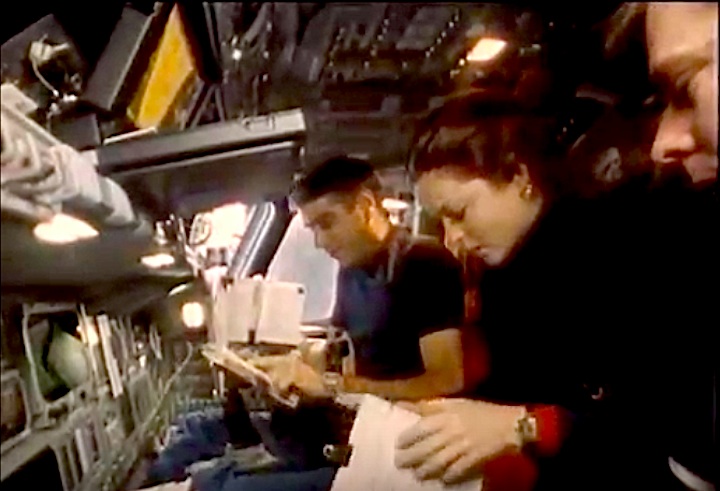
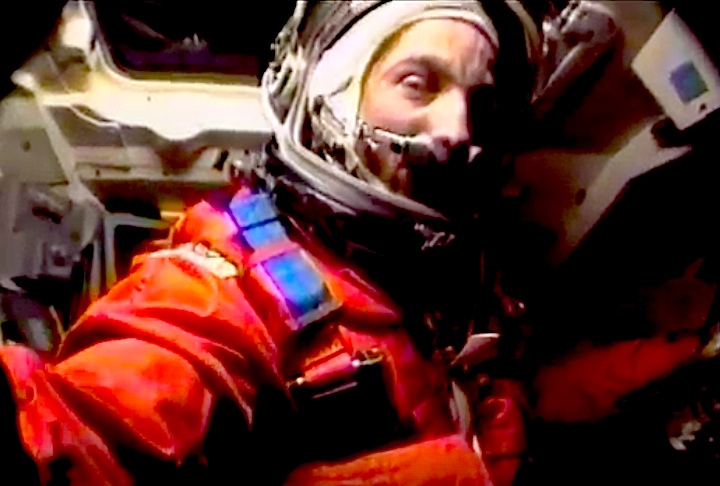
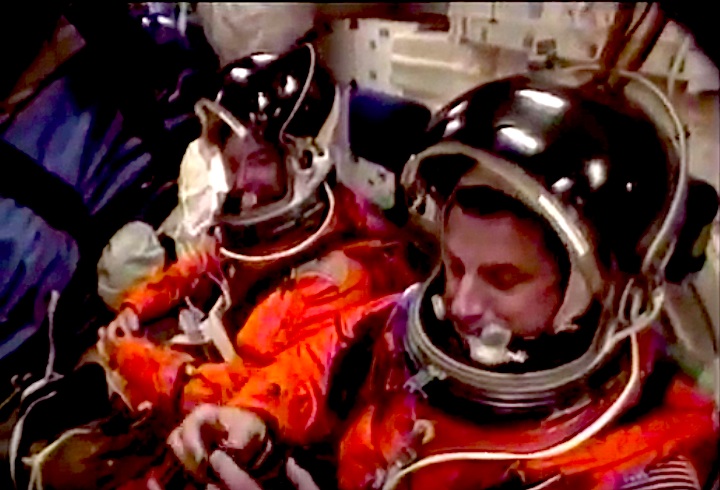
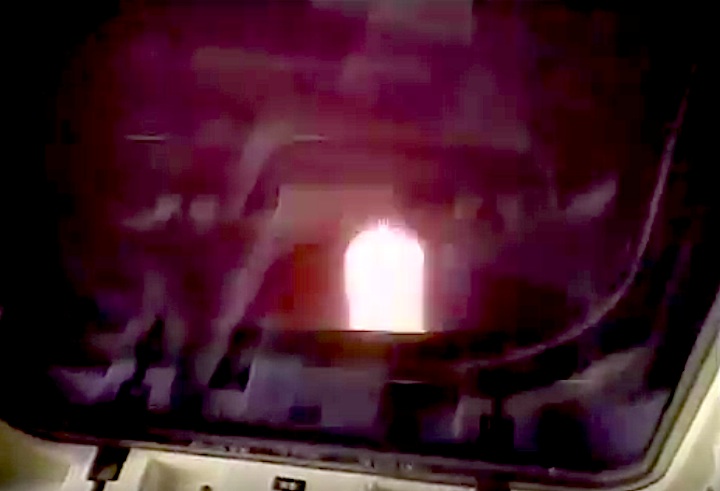
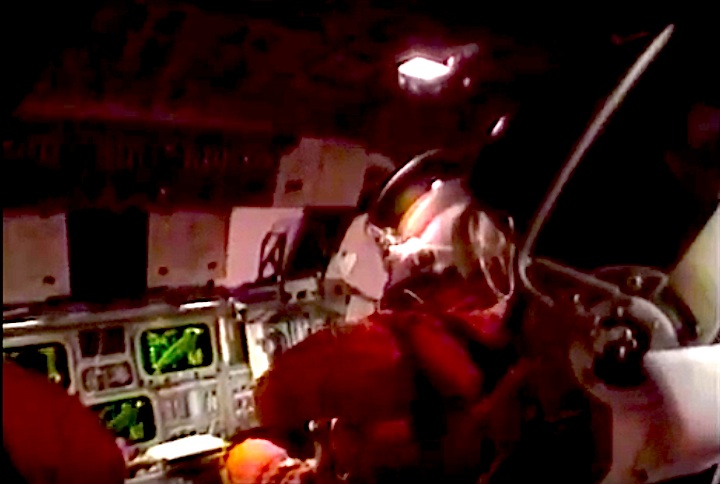
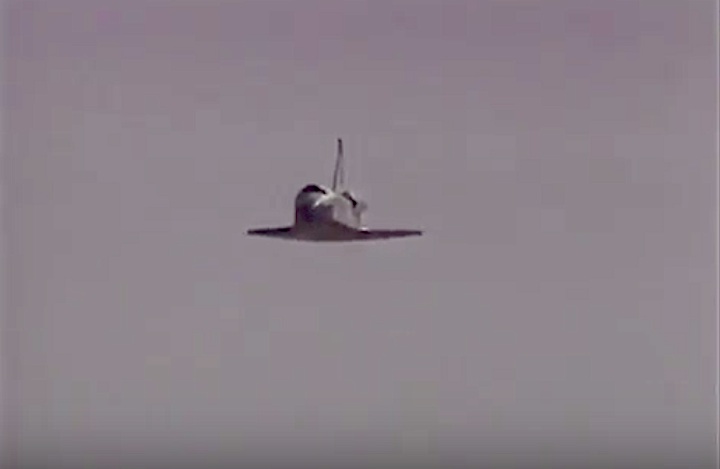
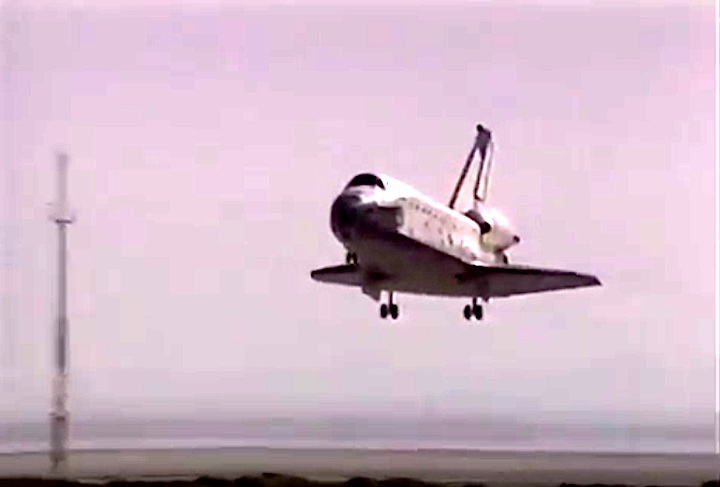
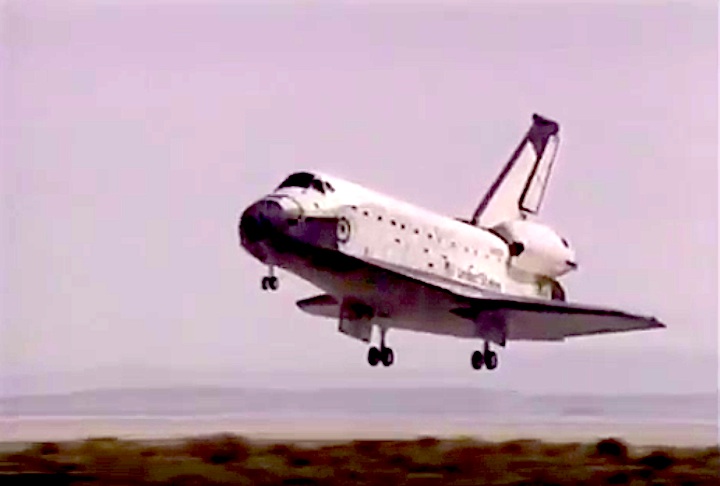
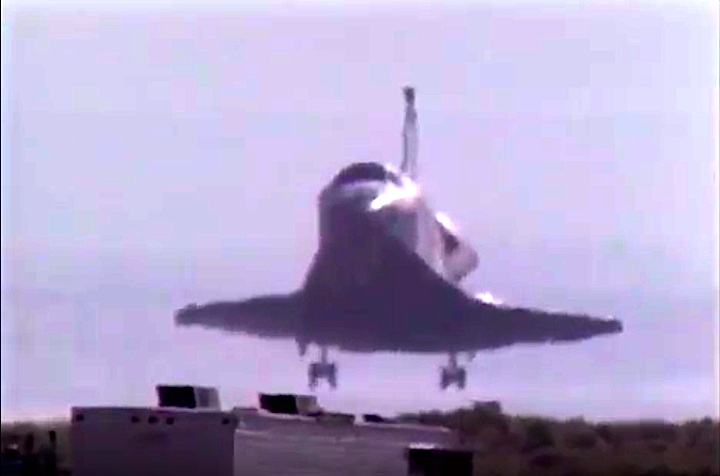
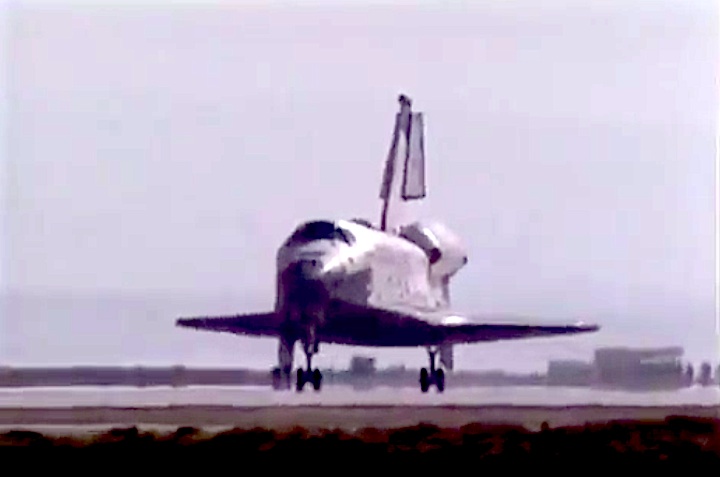
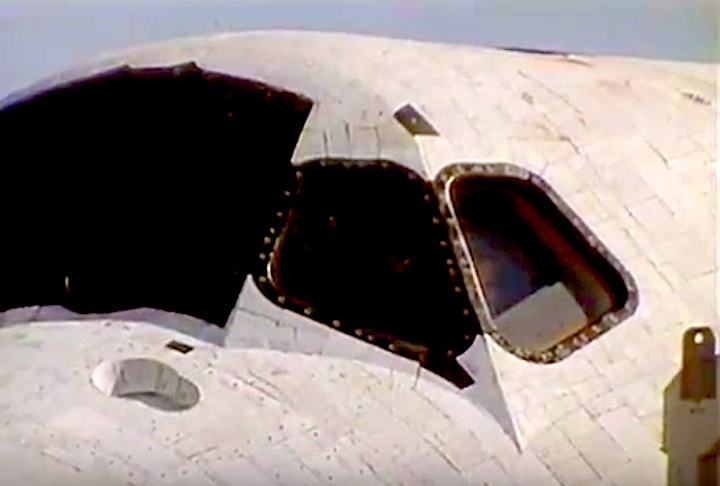
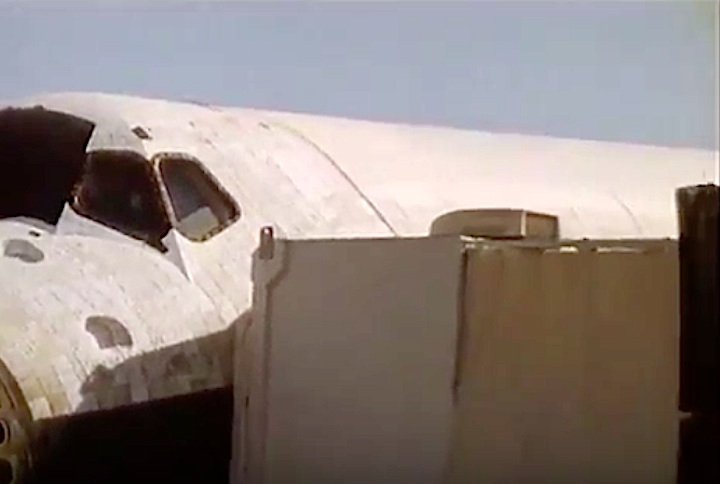
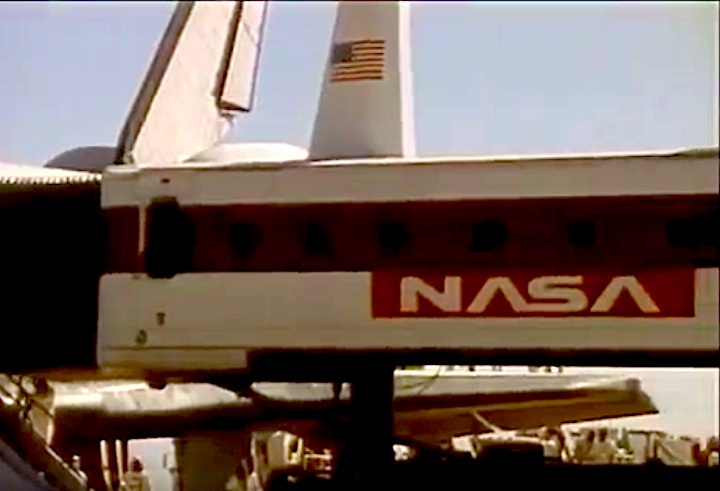
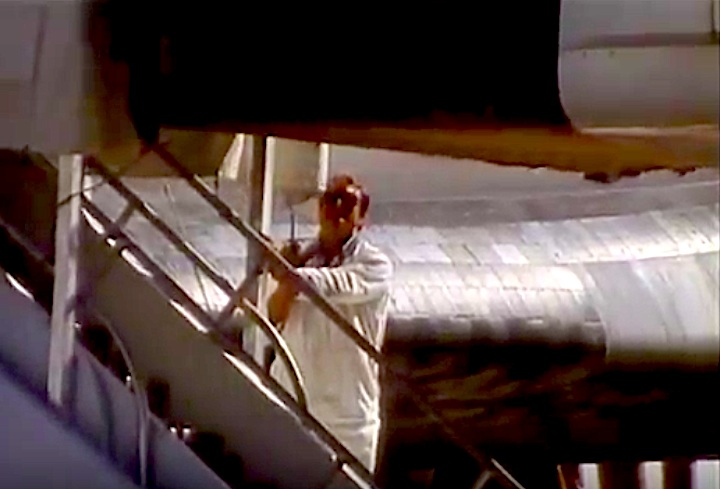

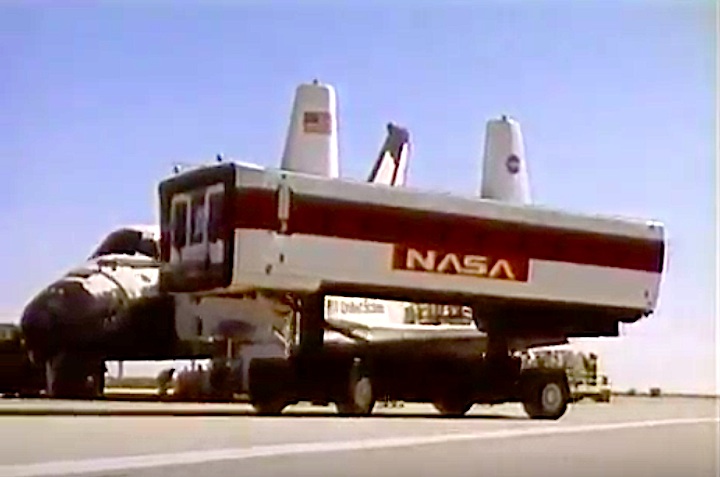
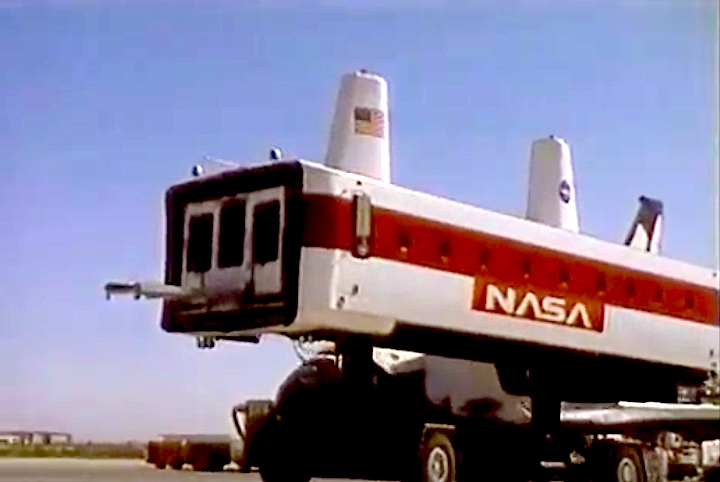
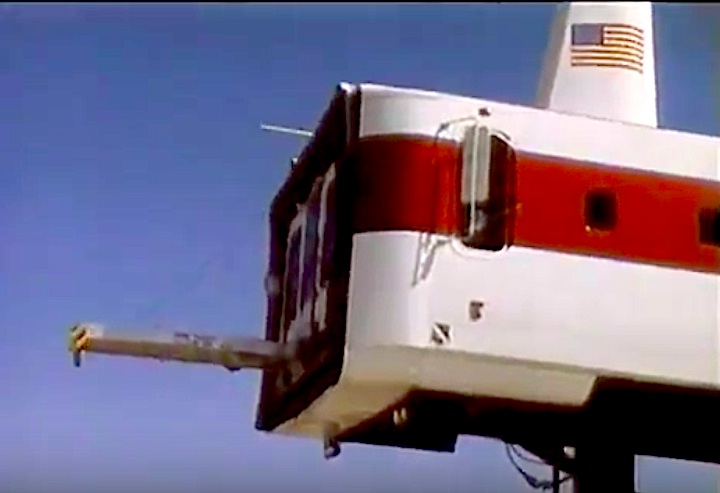
Quelle: NASA
4141 Views

